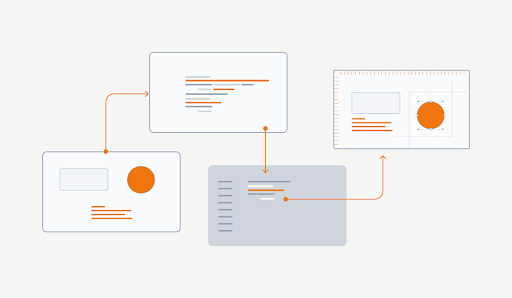Design Is Strategy: Our Framework Gets Us There Faster

Design Is Strategy: Our Framework Gets Us There Faster
At Xivic, we work fast, but not the “just ship it” kind of fast. More like, let’s stop redesigning the wheel and start focusing on the stuff that actually matters: intention, narrative, and results.
We created a flexible UX framework to help us do just that. It’s the system that lets us move quickly without sacrificing clarity, and it’s how we can spend less time on layout logistics and more time on what matters: making smart, strategic decisions.
Why We Built a Framework
We started to notice some patterns across projects, especially in the early wireframing phase. We were spending too much time rebuilding components, setting up grids from scratch, or re-solving layout problems we had already figured out in past work.
It wasn’t just inefficient, it also shifted the nature of client feedback. Instead of talking about content, goals, or intent, conversations often got stuck on visual inconsistencies or layout tweaks that weren’t moving the product forward.
So we challenged ourselves: could we create a flexible starting point that allowed us to focus less on setup and more on the story?
How It Works
We reviewed more than 20 Figma libraries to find one that could support the wide range of industries we work with, including healthcare, fintech, fitness, and government, among others. We chose Untitled UI as a foundation, then restructured it to fit our process and the level of adaptability we needed.
Here’s how we tailored it:
- Refactored components to match our internal workflows
- Modularized sections for rapid iteration on both web and mobile
- Built in responsiveness from the start to speed up prototyping
- Standardized specs and naming for a smoother developer handoff
It didn’t just save us time. It created a consistent, scalable way to align across design and dev, even with short timelines or shifting scopes.
The result: what used to take weeks now takes days. We can deliver full prototypes, test ideas early, and stay more responsive to feedback from clients and stakeholders.
What Changed for Our Clients
One of the biggest shifts we noticed was in the quality of conversations during review cycles. Once layout, spacing, and system-level elements were consistent from the start, the feedback became more strategic.
Instead of:
- “Can we make all the buttons more similar?”
- “This spacing feels off”
We started hearing:
- “Does this flow support the user’s goal?”
- “Is this section telling the right story?”
- “Could we simplify the decision path here?”
That shift allowed us to focus more on experience design, content, and interaction, and less on resolving visual noise.
Real Example: Charlotte Regional Business Alliance
One example of this system in action is the Charlotte Regional Business Alliance project, where we supported the design of a large, data-heavy site for a regional economic development alliance.
The project required:
- A high volume of modular, scalable layouts
- Fast turnaround across responsive breakpoints
- Smart use of interaction to surface complex information
With our framework in place, we were able to structure the experience quickly, reuse design logic across key templates, and layer in interactive elements without reinventing structure each time. It gave us a way to stay consistent while still customizing the experience for a unique audience of policy makers, investors, and business leaders.
Final Thought
Design systems aren’t just about speed. They’re about clarity and elevated output. When the foundation is strong and repeatable, we can spend more time thinking about impact and less time resolving things we’ve already figured out.
For us, this framework became more than a time-saver. It’s a strategic tool. It frees up the team to iterate faster, test earlier, and stay focused on what actually moves the product forward.
When design is treated as strategy, systems don’t slow you down. They unlock space to work smarter.
Ready to level up your digital transformation?